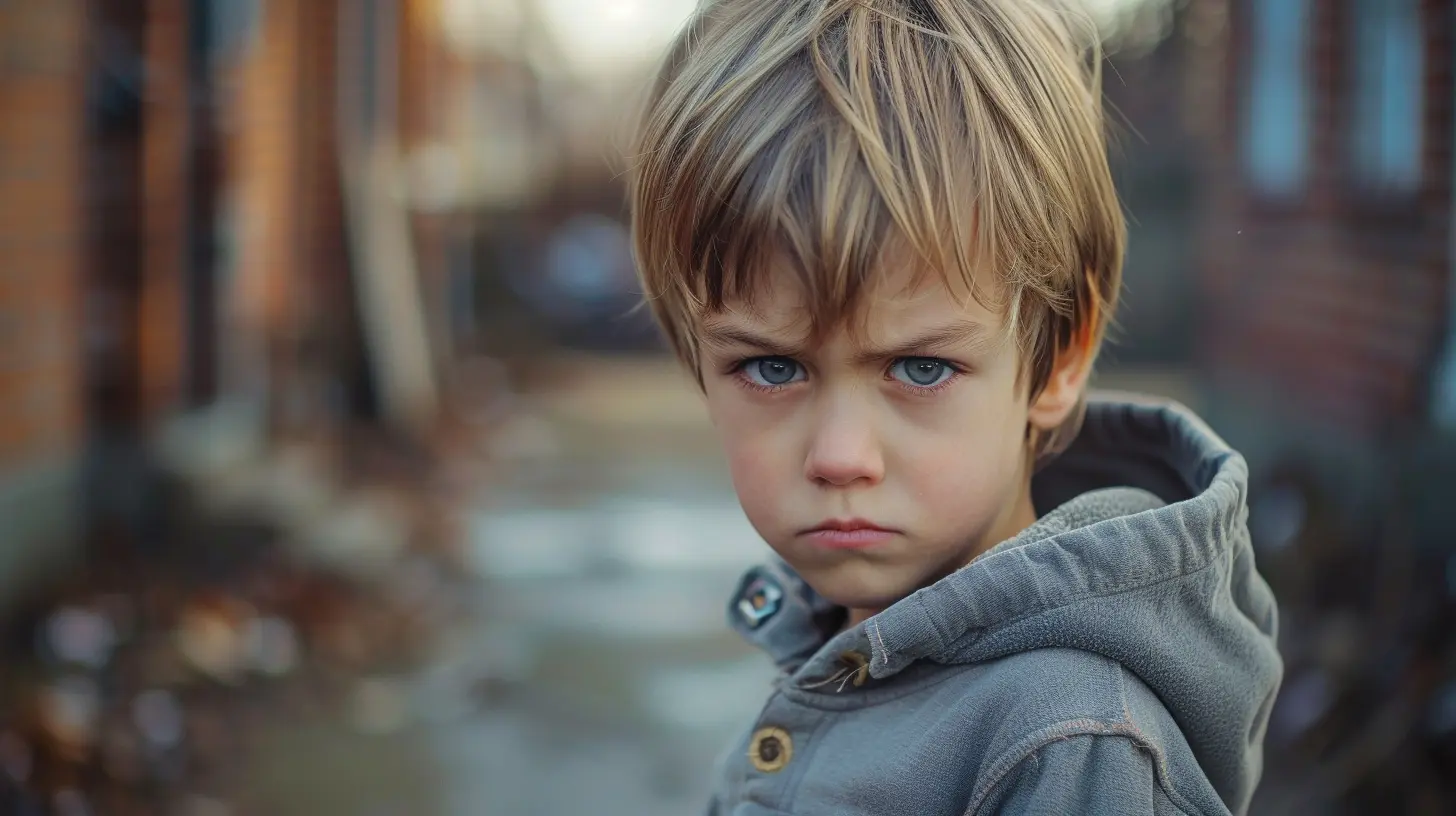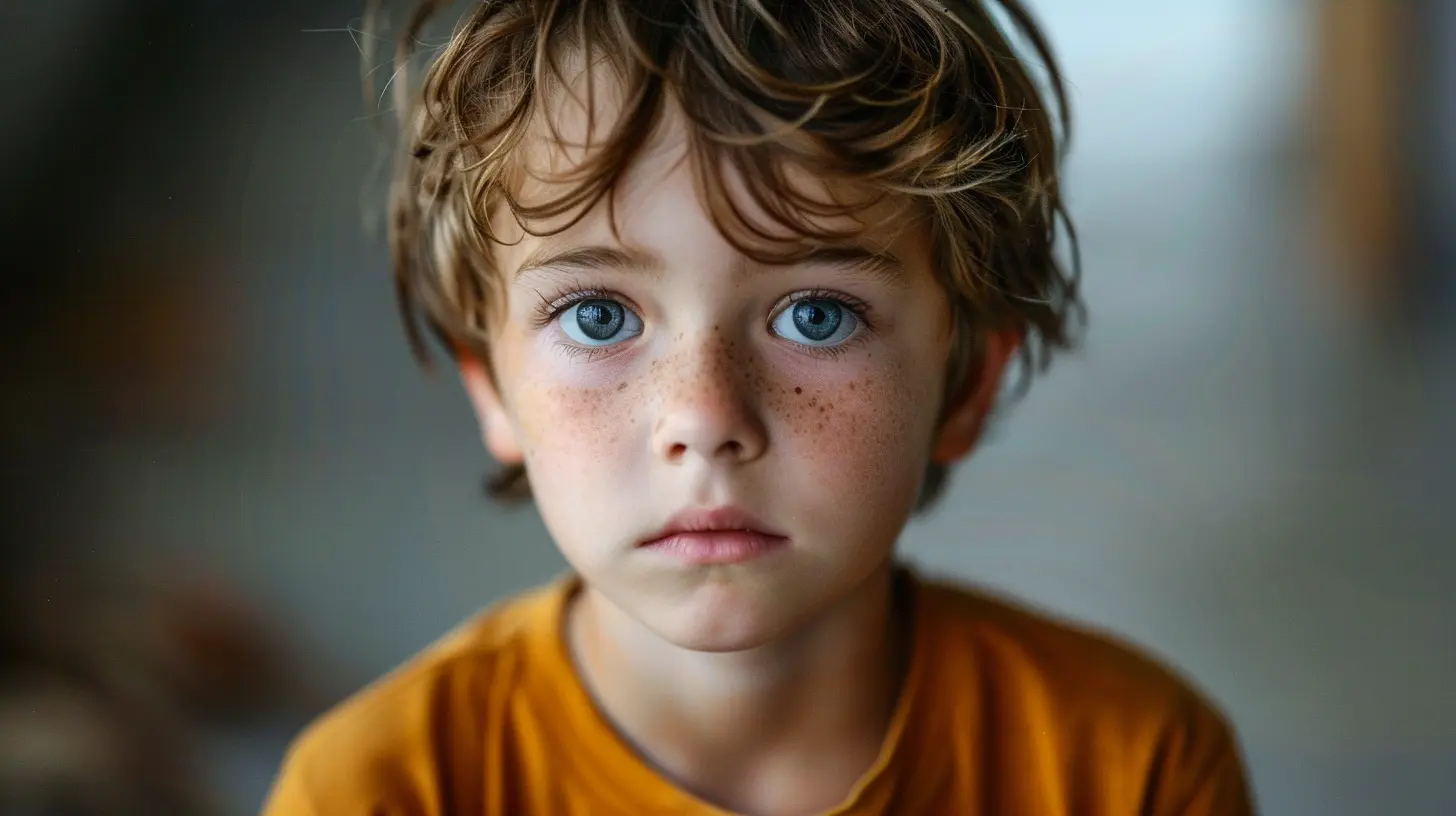What To Do When Your Child Gets Stuck in a Behavior Cycle
3 January 2025
Parenting is no walk in the park, is it? Some days, you feel like a superhero with all the right answers, and others, you’re pulling your hair out wondering, "What am I doing wrong?" That’s especially true when your child seems to be stuck in a behavior cycle—like hitting the same emotional wall over and over. It's frustrating, exhausting, and let's face it, sometimes downright confusing.
But here's the thing: You’re not alone. This is something most parents face at some point, and there are ways to help your child break free. Let’s dive into it together and figure this out step by step. 
What Exactly Is a Behavior Cycle?
Before we can tackle the issue, we have to understand it. A behavior cycle is like being stuck on an emotional or behavioral merry-go-round. Your child gets triggered by something, reacts in a specific way (a tantrum, defiance, withdrawn behavior), and then the cycle repeats because the underlying issue isn’t addressed.It’s like trying to stop a hamster wheel by yelling at the hamster. It doesn’t work because the root cause (the wheel keeps spinning) hasn’t been dealt with. The good news? You can help your child hop off that hamster wheel—no shouting required. 
Step 1: Recognize the Signs
First thing’s first: You’ve got to identify when your child is stuck. It’s not always as obvious as it seems. Sure, some behavior cycles are larger-than-life and impossible to ignore, like regular meltdowns over bedtime. But others might be sneakier—maybe your child shuts down every time they’re asked to do homework or gets overly angry when they're told "no."Start by asking yourself: What’s the pattern here? Is there a specific trigger? A recurring action or reaction? Parenting is part detective work, and this is where you'll need to turn on your “Sherlock Holmes” mode to spot the clues. 
Step 2: Don’t Take It Personally
Here’s a tough pill to swallow: Your child’s behavior cycle is not about you.Let me repeat that for my fellow guilt-prone parents in the back—it’s. not. about. you.
When kids behave in ways that push every single one of our buttons, it’s easy to feel like it’s some targeted, personal attack. It’s not. Instead, it’s a sign that your child is struggling to process something big in their little world. They’re not trying to ruin your day; they’re asking for help. 
Step 3: Get Curious, Not Furious
When your child is stuck in a behavior loop, it’s super tempting to go straight into fix-it mode. “Why are you acting like this? Stop doing that!” We've all done it. (Seriously, no judgment here.) But instead of reacting, take a step back and get curious.What’s going on beneath the surface? Ask yourself:
- Is my child tired? Hungry? Overwhelmed?
- Is there a specific trigger (too much screen time, sibling rivalry, transition times)?
- Is this a learned behavior that’s worked for them in the past?
Think of their behavior like the tip of an iceberg. What you see (the tantrum, the refusal, the attitude) is just a small piece of what’s happening below the surface. The real magic comes when you uncover what’s underneath.
Step 4: Stay Calm and Regulate Yourself
Let’s be real: Keeping your cool when your child is spiraling is HARD. Your toddler is screaming at the top of their lungs, or your teenager is rolling their eyes so hard you feel personally attacked. Staying calm? Easier said than done.But here’s the kicker: When you lose your cool, you’re essentially adding fuel to the fire. Kids feed off our energy. If you're panicking, yelling, or shutting down, they’re likely mirroring that back to you.
Think of yourself as your child’s emotional anchor. When they’re rocking the boat, they need you to steady it—not tip it over. Deep breaths, a quick time-out for yourself, or even a mental mantra like “I’ve got this” can make all the difference.
Step 5: Teach Them to Name (and Tame) Their Emotions
Here’s a parenting truth bomb: Kids can’t always identify what they’re feeling, let alone communicate it. Imagine trying to put together IKEA furniture without instructions—that’s how kids feel when navigating their big emotions without guidance.Your job? Be their instruction manual. Help them name their feelings: “You look really frustrated right now. Is that how you’re feeling?”
Once they know what they’re feeling, you can teach them ways to handle it:
- Deep breathing exercises or belly breathing
- Drawing or journaling their emotions
- Physical activity to release pent-up energy (a dance party in the living room works wonders!)
- Validating their feelings so they know it’s okay to feel upset or sad
Step 6: Set Clear and Consistent Boundaries
Let’s face it: No one likes being the bad guy. But boundaries are essential for kids, especially when they’re stuck in a behavior cycle.Boundaries give your child a sense of safety and predictability. They know what’s expected of them and what will happen if they cross the line. Think of boundaries as guardrails—they keep your child from veering too far off course while giving them the freedom to navigate within a safe space.
The key? Be consistent. Kids need to know that a “no” isn’t negotiable one day and a “maybe” the next. It’s confusing and reinforces the behavior cycle.
Step 7: Consider the Bigger Picture
Sometimes behavior cycles aren’t just about what’s happening at home. External factors like school stress, friendships, or even changes in routine can throw kids into a loop.- Is your child struggling academically?
- Have they experienced a recent big change (like moving, a new sibling, or divorce)?
- Are they dealing with social issues, like bullying or exclusion?
It’s worth digging deeper and even involving teachers, counselors, or other caregivers if needed.
Step 8: Celebrate Progress (Even the Small Wins!)
Breaking a behavior cycle isn’t a sprint; it’s a marathon. And with any marathon, small milestones are worth celebrating.Did your child go a whole week without a meltdown during homework time? Did they use their words instead of throwing a tantrum just once? That’s progress, and it deserves acknowledgment.
Remember, positive reinforcement is powerful. Kids want to feel good about their accomplishments, no matter how small they seem. A high-five, a sticker chart, or just saying “I’m proud of you” can go a long way.
Step 9: Be Patient (With Them and Yourself)
Here’s the reality check none of us want to hear: Breaking a behavior cycle won’t happen overnight. It takes time, effort, and yes, a whole lot of patience.There will be setbacks. You’ll have moments where you feel like giving up. But remember, parenting is about progress, not perfection.
And hey, cut yourself some slack. You’re human—not a parenting robot. Some days, you’ll get it right, and others, you’ll feel like you’re winging it. That’s okay. What matters is showing up, learning as you go, and giving yourself grace along the way.
When to Seek Help
If you’ve tried all the strategies above and your child is still stuck, it might be time to bring in the pros. There’s no shame in asking for help—whether it’s from a therapist, counselor, or pediatrician. Sometimes an outside perspective is exactly what’s needed to get things back on track.Final Thoughts
Helping your child break free from a behavior cycle can feel like trying to untangle a giant ball of string. But with patience, understanding, and a little detective work, you can help them navigate their emotions and find healthier ways to cope.And remember: You’re doing a great job, even on the days it doesn’t feel like it. Parenting is messy, beautiful, and full of learning opportunities—for both you and your child. You’ve got this!
all images in this post were generated using AI tools
Category:
Parenting StrugglesAuthor:

Steven McLain
Discussion
rate this article
12 comments
Katalina McInerney
Understanding your child's behavior cycle can be challenging. Remember, patience and open communication are key. Observing triggers and providing a safe space for emotions can help break the cycle. You're not alone in this journey—many parents face similar challenges and find supportive paths together.
March 8, 2025 at 3:49 AM

Steven McLain
Thank you for your insightful comment! You're absolutely right—understanding behavior cycles requires patience and communication. Observing triggers and creating a safe emotional space are essential for both parents and children. We're all in this together!
Preston Allen
Break the cycle with love and patience! Embrace open communication and understanding—these are your keys. Remember, every challenge is an opportunity for growth, both for you and your child. Together, you will find the way forward!
February 10, 2025 at 4:33 AM

Steven McLain
Thank you for your insightful comment! Love, patience, and open communication truly are essential in helping children navigate behavior cycles. Your perspective on growth is invaluable!
Nadine Roberson
Thank you for this insightful article! It's comforting to know we're not alone in navigating behavior cycles with our kids. Your tips are practical and reassuring—an invaluable resource for parents seeking to foster positive changes.
January 26, 2025 at 4:52 PM

Steven McLain
Thank you for your kind words! I'm glad you found the tips helpful. Together, we can support each other in fostering positive changes for our kids.
Taryn McCallum
Ah, the infamous behavior cycle! It’s like watching your child star in their own endless rerun. Just remember, every season brings new episodes—stay tuned for the plot twist!
January 20, 2025 at 5:29 PM

Steven McLain
Great analogy! Embracing those "plot twists" can lead to growth for both child and parent. Stay proactive!
Wolf Duke
When your child is stuck in a behavior cycle, try consistent communication, positive reinforcement, and setting clear boundaries to encourage healthier habits.
January 11, 2025 at 5:28 PM

Steven McLain
Thank you for your insightful comment! Consistent communication and positive reinforcement are indeed key strategies for breaking behavior cycles and fostering healthier habits in children.
Liam Benson
When your child is caught in a behavior cycle, focus on consistency and communication. Establish clear expectations and gently redirect their attention to positive activities. Engage in open conversations about feelings, and consider implementing a reward system to reinforce desired behaviors. Patience and understanding are key to breaking the cycle.
January 9, 2025 at 3:41 AM

Steven McLain
Thank you for your insightful comment! Consistency and open communication truly are essential in guiding children through behavior cycles. Your tips on expectations and positive reinforcement are much appreciated!
Pamela Wilson
Ah, the infamous behavior cycle—where your child’s favorite pastime is auditioning for a drama series! Just remember, every great actor needs a good director. Time to script some new scenes for their next performance!
January 8, 2025 at 5:27 PM

Steven McLain
Thank you! A fresh approach can definitely help break the cycle. Let's rewrite those scripts together!
Xeno McGinn
Embrace patience and understanding; each cycle is a chance for growth and connection!
January 7, 2025 at 3:47 PM

Steven McLain
Thank you! Embracing patience and understanding truly fosters growth and strengthens our connections with our children during these challenging times.
Kestrel Jenkins
Break the cycle with consistency and patience. Engaging your child in open communication is key to fostering positive change.
January 7, 2025 at 4:21 AM

Steven McLain
Thank you for your insightful comment! Consistency, patience, and open communication are indeed essential for helping children navigate behavior challenges.
Brandon Jones
Just remember: every cycle can be a chance for a dance!
January 6, 2025 at 5:14 AM

Steven McLain
Absolutely! Embracing the cycles can open up new opportunities for growth and connection.
Upton McKittrick
Great tips! It’s tough when our kids are stuck in a cycle. Patience and understanding go a long way.
January 4, 2025 at 5:08 AM

Steven McLain
Thank you! Patience and understanding are indeed key in helping children break those cycles.
Emily McCarty
In the labyrinth of childhood behavior, each cycle holds secrets waiting to be uncovered. What if the key lies not in the strategies we employ, but in the whispers of understanding and patience? Dive deep into the heart of your child’s world and unlock change.
January 3, 2025 at 5:27 PM

Steven McLain
Thank you for your insightful comment! Emphasizing understanding and patience truly can be transformative when addressing behavior cycles in children.
MORE POSTS

How to Handle Your Child's Big Emotions When You Feel Drained

Building Confidence Through Sports: A Parent's Role

How to Help Children with Special Needs Form Meaningful Friendships

Digital VS Analog Play: Striking the Best Balance

Mindfulness for Parents: How to Stay Present Amid the Chaos

Family Fishing Adventures: Beginner Tips for Parents and Kids

Teaching Kids About Responsibility Through Pets and Plants

Addressing Peer Pressure and Its Impact on Girls